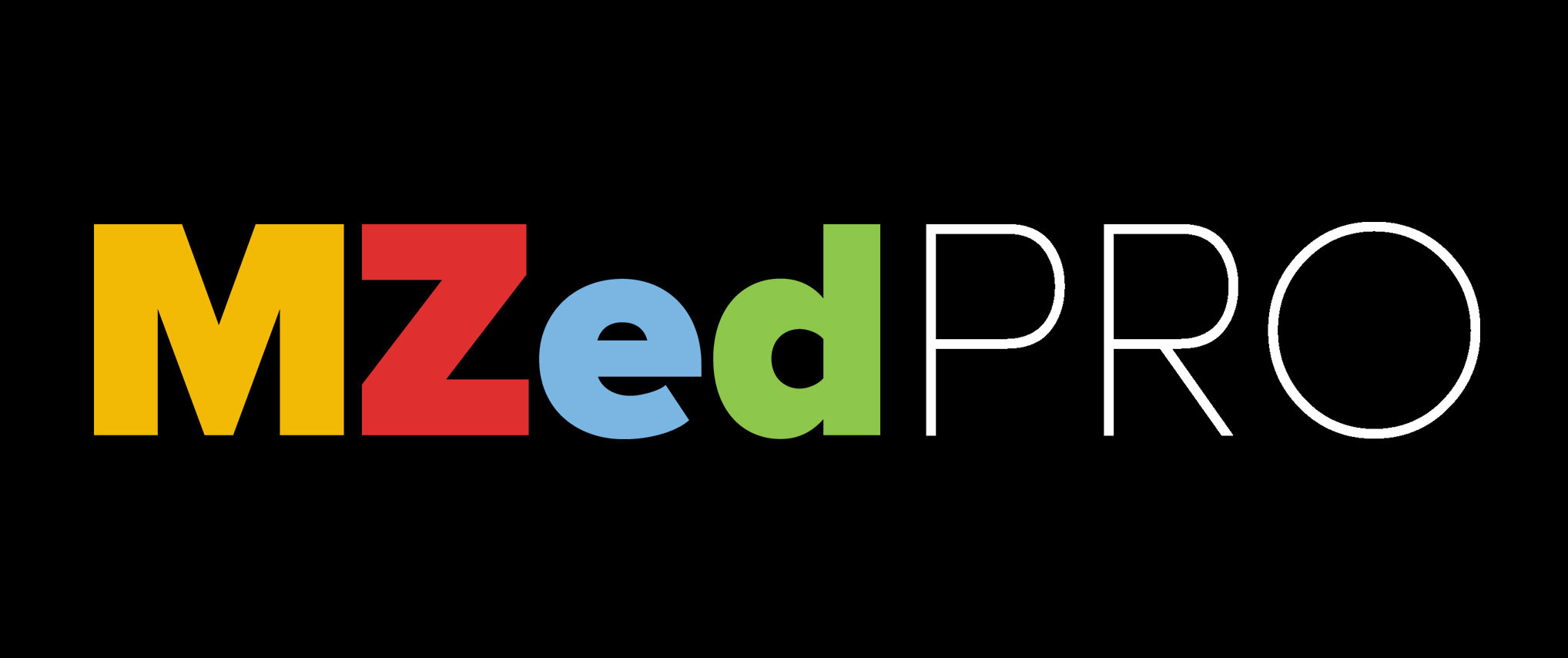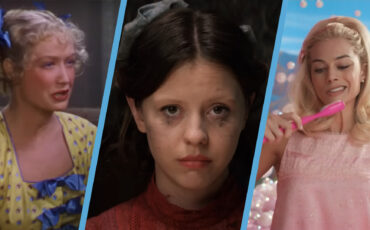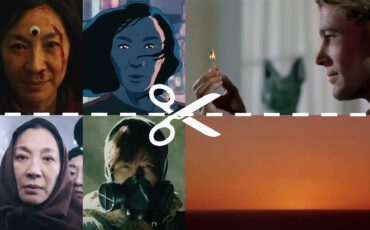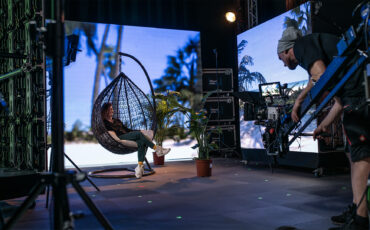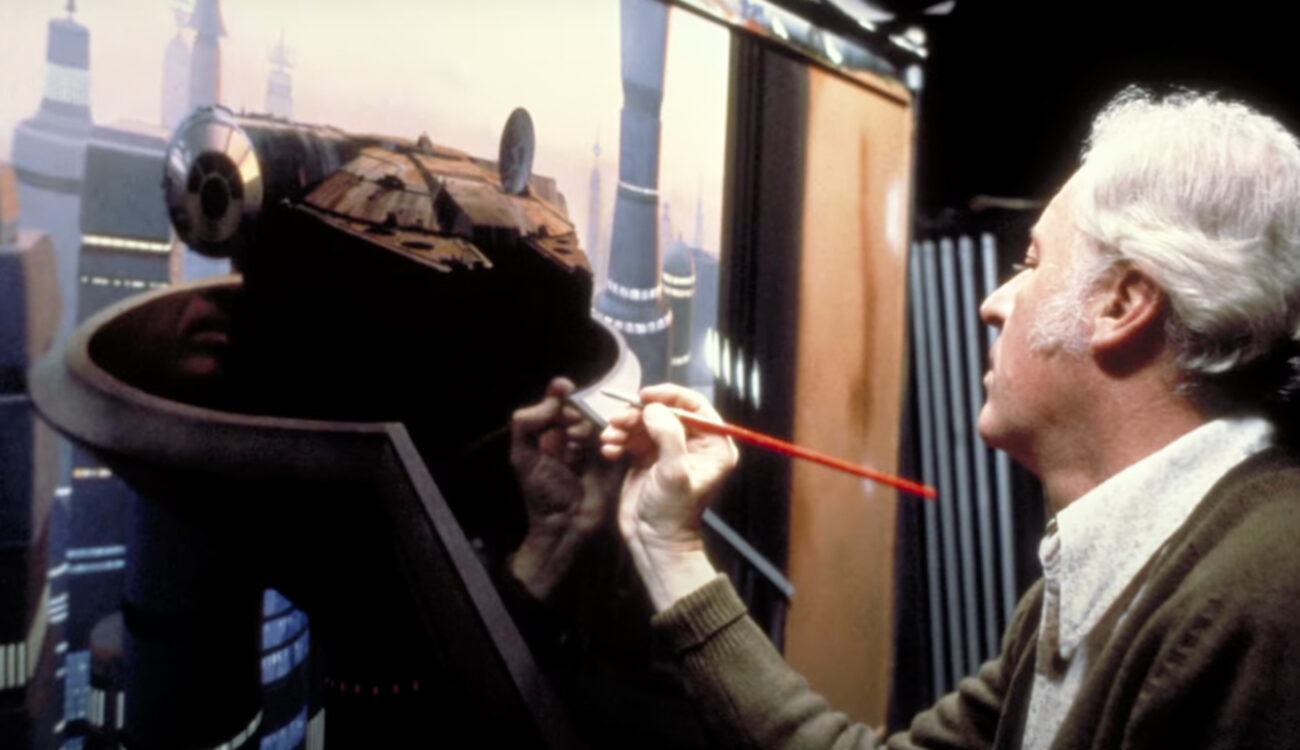
Do you know the feeling of when you stand on a partially dressed set, look at the monitor, and witness how film magic transforms the space around you? Amazing, right? However, I believe the effect is even more impressive when a painted glass with breathtaking or impossible scenery is placed in front of the camera. Are you familiar with the technique I’m referring to? Yes, as the title suggests, today we’ll delve into the world of matte painting, exploring its history and evolution in filmmaking.
The use of matte paintings in cinema dates back to the early 1900s. Back then, artists used practical materials—glass panels and canvas backdrops. Naturally, the technique has evolved over the century. Nowadays, when we talk about it, we dive instead into the digital world. Why did it stick around, though? What’s so useful and remarkable about the matte painting approach?
What is a matte painting? The tradition
Let’s start with a general understanding of the term. Imagine a live-action film set where everything is perfect, save for the surroundings. (Maybe you need to place your protagonist on the legendary Cliffs of Moher, or your wide shot requires a huge futuristic cityscape, which doesn’t exist and/or is impossible to build on any budget). Then, imagine a large sheet of glass and artists who have carefully painted the required environment on it, including the smallest details, using pastels or other paints. This glass plate (or matte painting) is placed in front of the camera. With careful adjustments and framing, the “background” seamlessly integrates with real-world elements like foreground, props, and actors on set. Just like here:
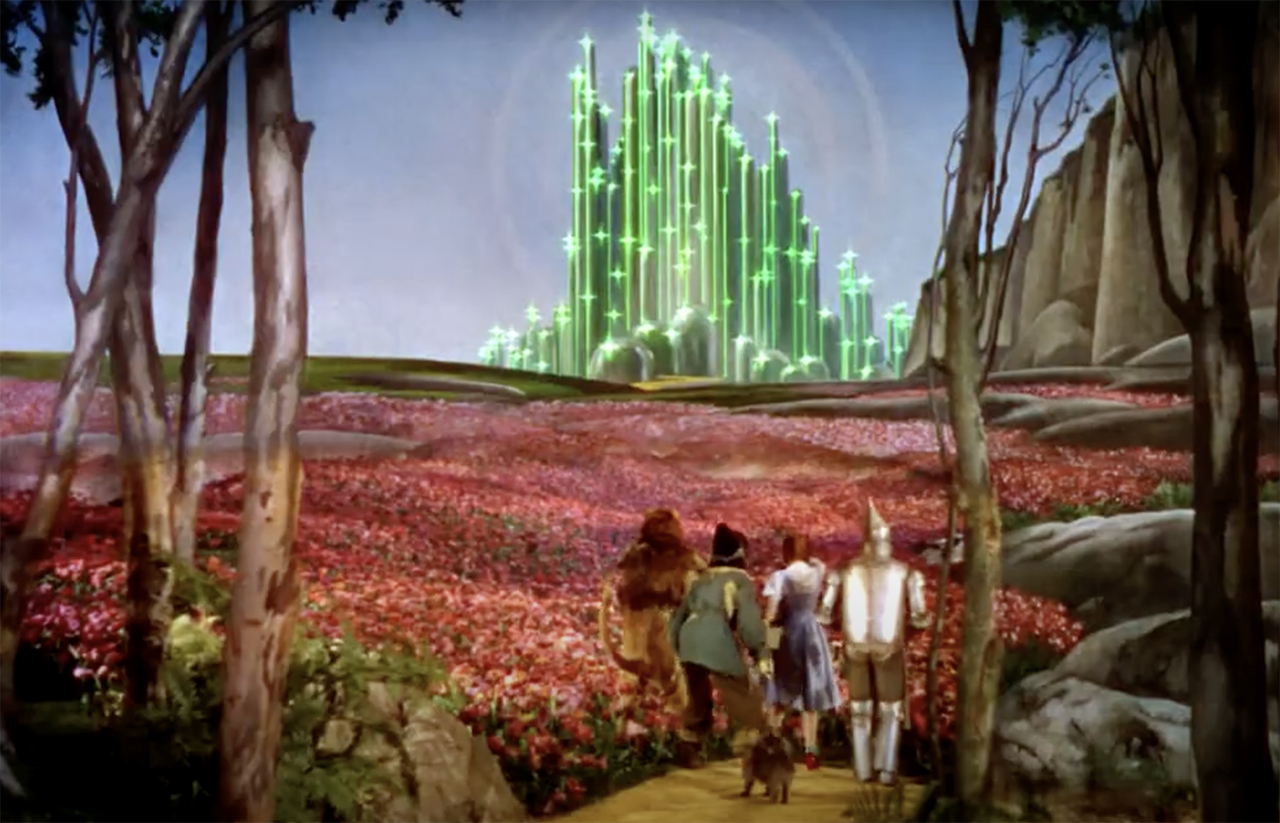
This was the traditional method for creating matte paintings in cinema, likely inspired by theatrical techniques. The more realistic the painting, the better the result. Combining glass plates with live-action footage in real-time gained the name “compositing.” No doubt, many of you who are VFX artists are familiar with this process. We’ll touch on the digital matte paintings further below.
The Indie Film Blueprint
How it all started
The first matte painting in cinema that we know of appeared in 1907 in the film “Missions of California” by director Norman Dawn (who was also, by chance, a painter). Moreover, Norman created numerous matte paintings using the same glass technique. Interestingly, the film was a documentary, not a fictional piece. Take a look:
Why would a documentary director need to extend his real footage with paintings? The answer is simple. Norman wanted to reconstruct some of the California Missions buildings in his film, which had already crumbled. For that, he painted various sections of the buildings on glass and aligned them with actual filmed parts. This is creative thinking at its best!
The main goal of the matte painting
However, matte paintings quickly became very popular in movies for another reason. Namely, they allowed filmmakers to achieve backgrounds and environments that were either impossible to build or where actual production design would have cost a fortune. This budget-saving factor made matte painting an ultimate solution even for the biggest sets we can imagine, such as the beloved original franchise “Star Wars” by George Lukas.
Among other prominent examples of using glass matte paintings for set augmentation are “Citizen Kane“, “Mary Poppins”, the original “King Kong”, and “Planet of the Apes” movies.

A film still from “Citizen Kane” by Orson Welles, 1941 
End credits of “Mary Poppins” by Robert Stevenson, 1064 
From “Planet of the Apes” by Franklin J. Schaffner, 1968
Apart from that, matte painting was often combined with other on-a-budget set design solutions, like miniatures or models, which were placed between the background and the sheets of glass.
When you are an independent filmmaker or just starting out, every cent of your budget counts, and that’s where solutions like matte painting become vital.
Transferring into the digital realm
As we all know, at some point, computers came into play and changed our lives forever. As technology progressed, so did artistic techniques and methods. However, matte painting hasn’t become obsolete, it just changed form. In 1985, painter Chris Evans created the first digital matte shot for “Young Sherlock Holmes,” and if you’re a film buff, you’re surely familiar with this scene:
Firstly, Chris Evans painted the knight on the window in acrylics. Then, he scanned the illustration into a special system (creating a so-called digital matte) and used it for further digital manipulation and animation.
Nowadays, digital artists use matte paintings in CG (or computer graphics) all the time. Of course, not with real paint, but with 2D illustrations or photos. This way, they can repaint particular parts of the shot, add missing elements, or – more often than not – make background extensions. In the following video, you can see some of the digital shot augmentations for the famous HBO series “Game of Thrones”:
A similar approach in animation
Naturally, digital matte paintings are also used in other media industries, like video games, advertising, and animation. Let me show you the process in one of the mind-blowing short films from “Love, Death & Robots,” which is probably my favorite episode of the entire series. It is called “Jibaro,” and it’s a stylized 3D animation with a captivating story, amazing camera work, and brutally good sound design.
Sometimes, it features shots that are more or less static, like the following scene in a forest. If you look closely, you will notice that the background is painted in thick brushstrokes. Here, artists also relied on the matte painting method, animating only the small parts of the shot where we see the character and his movement. Everything else is just a flat illustration, seamlessly composed into the shot, just like its predecessors out of glass.
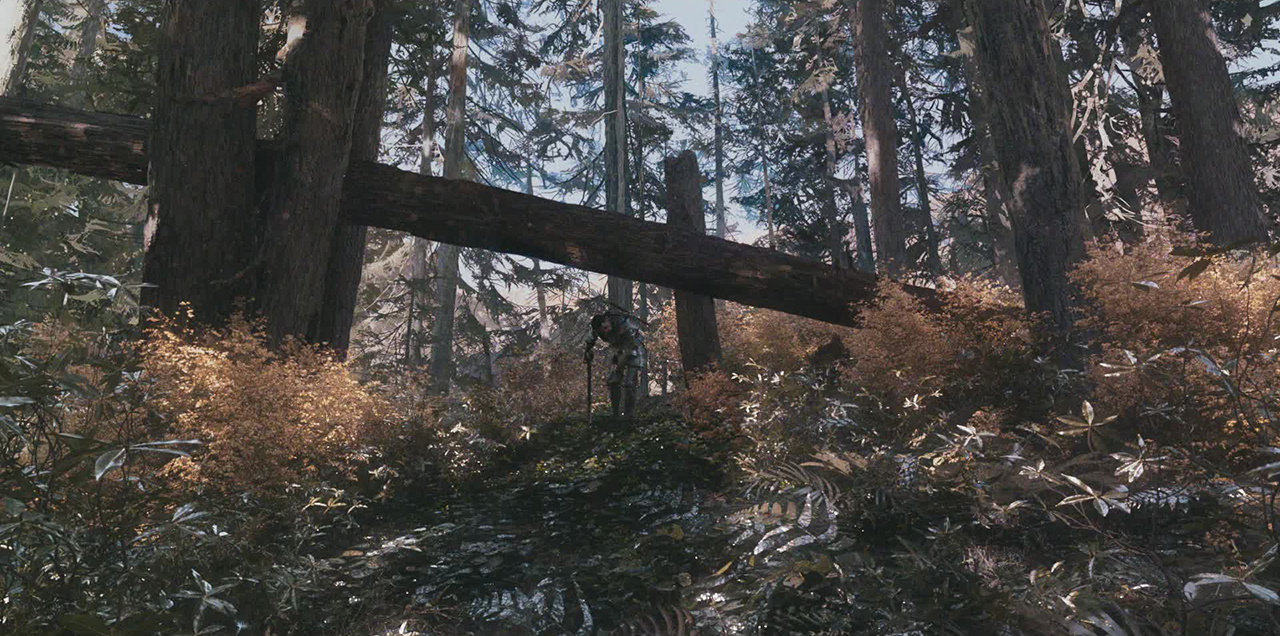
The reason is that digital matte paintings save an enormous amount of time and money in animation as well. Why would you construct (and render!) the entire environment in 3D if you only see it briefly, from one angle, and without much movement?
If you’re generally interested in making such animated shorts, I highly recommend this small behind-the-scenes “Jibaro” documentary. The content offers many valuable insights.:
Another budget-saving idea
The matte painting technique inspires us to use film magic in all possible ways. Thus, nowadays, we may find other approaches that rely on flat illustrations and compositing. Some may be straightforward, like cardboard cutouts used in the Oscar-winning film “Everything Everywhere All At Once.” Take a look at this shot, for example:
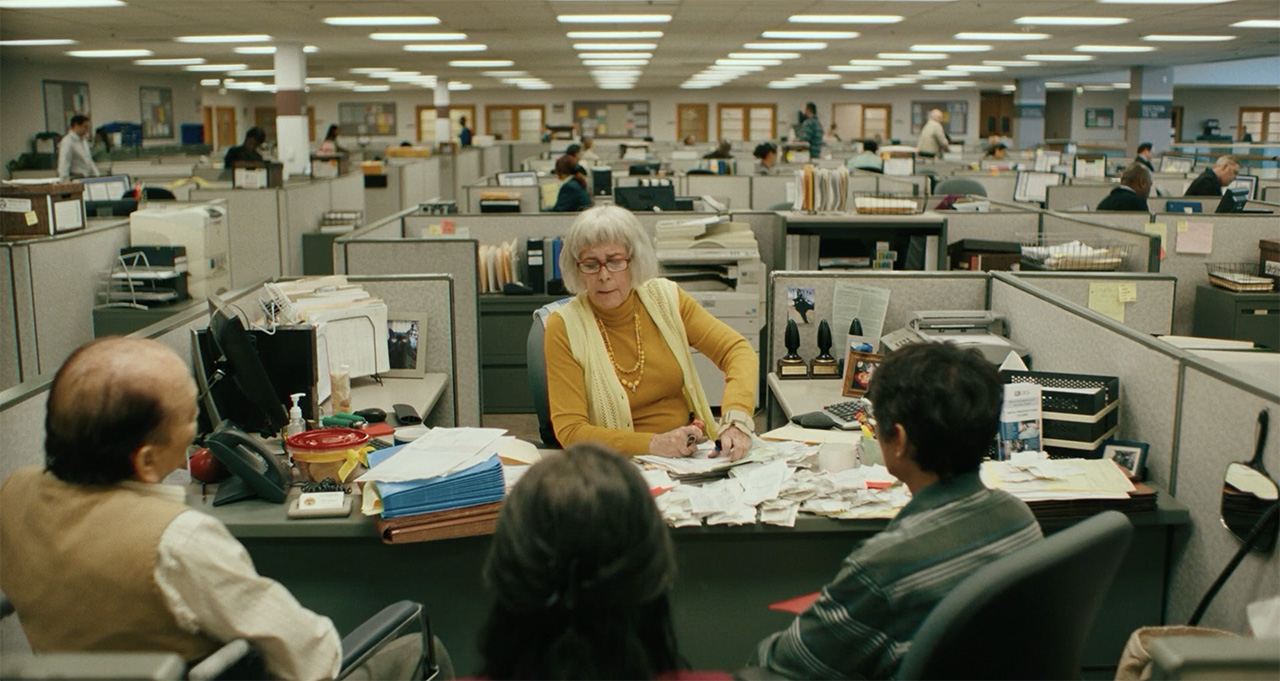
Do you notice anything weird? Probably not. However, the production design team used cardboard cutouts instead of real backgrounds. Only the first rows of desks and computers, closest to the camera, were real. The ones you see in the background are just photorealistic pictures with a correct perspective, made on cardboard. Saves a lot of time and money, doesn’t it? The alternative would be to dress the whole set only for a few wide shots.
The virtual production approach also reminds us of matte painting, as we use either still pictures or constructed 3D environments instead of real locations and integrate them directly into the shot while we shoot. You can read more about it here and here.
Conclusion
Matte painting has come a long way, from glass plates with acrylic paint to 2D illustrations, but it hasn’t lost its simple magic. Savvy solutions like this are what make filmmaking special. It’s not just about cost-cutting; it’s also about creative thinking.
Have you already had experience with matte paintings of any kind? What do you think about this technique? What other creative solutions on set does it remind you of? Share with us in the comments below!
Full disclosure: MZed is owned by CineD.
Feature image source: Lucasfilm Ltd. LLC.



